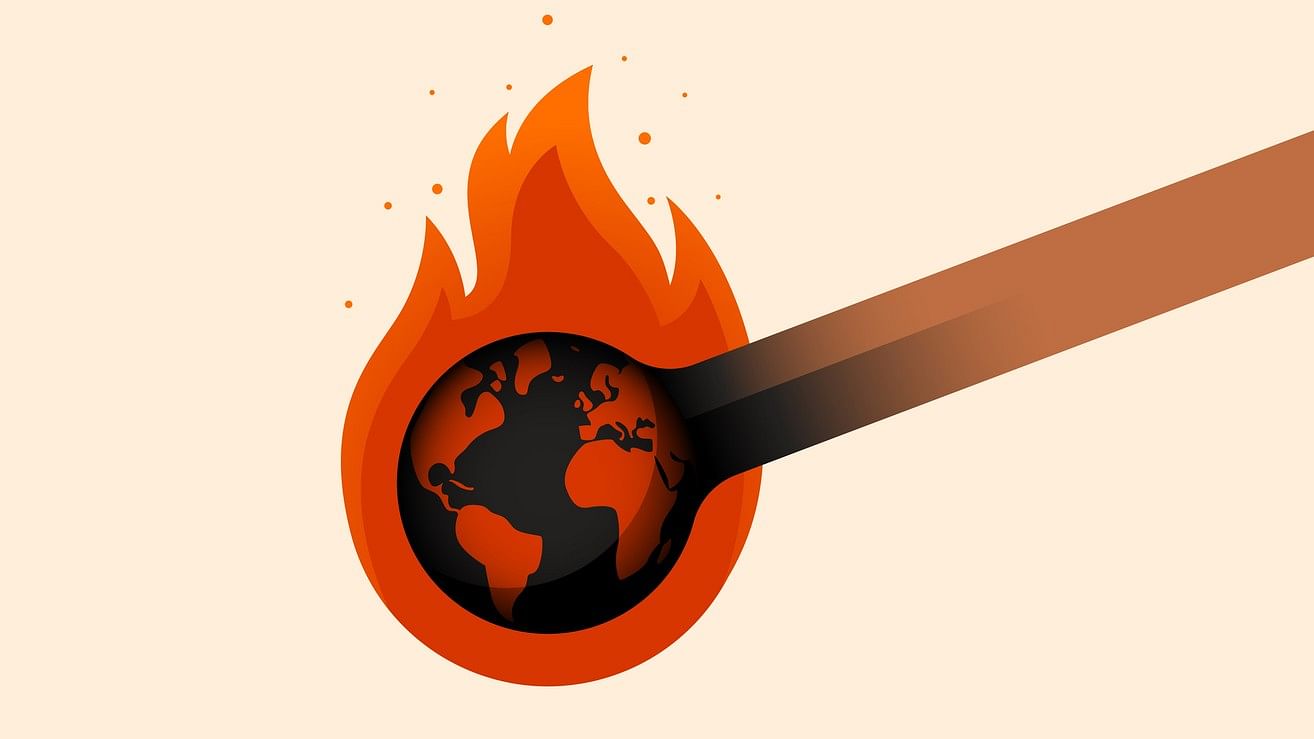
Representative image of global warming.
Credit: iStock photo
By David Fickling
For all the damage that humanity is causing through our production of greenhouse gases, the numbers involved can seem impossibly slight.
Every year we release about 9.6 billion metric tons of carbon into the atmosphere as CO2, or carbon dioxide — but there’s about 58 trillion tons stored away in organic and fossil matter in the atmosphere, land, and oceans.
For decades, that has suggested an alarming prospect. By heating the planet, we risk changing the delicate conditions that ensure those trillions of tons stay locked up in soils, plants, and seawater.
Tip the balance too far, and we might provide the catalyst for these immense natural reserves to start disgorging themselves, like a bottle of soda fizzing up when it’s opened.
The result could be a “methane bomb” — a rapid and devastating release of greenhouse gases that could overwhelm our best efforts to hold back warming.
Credit: Bloomberg
To date, there’s been hearteningly little evidence that such so-called climate feedbacks — where climate change triggers natural processes which then accelerate warming in a self-amplifying spiral — are occurring on a scale we should worry about.
The Intergovernmental Panel on Climate Change’s latest assessment in 2021 found warming and cooling feedback effects are essentially canceling each other out.
As the temperature rises, more sea spray, dust and other fine matter is lofted into the atmosphere, helping to reflect more of the sun’s warming rays back into space.
A warmer planet also radiates more energy, thanks to a side effect of quantum mechanics. That should be more than enough to counter the effects of any methane bombs.
That’s a highly tentative assumption, however, and there are worrying signs that the situation is changing.
Take the evidence presented by a team led by researchers at the University of Colorado, Boulder this week. They looked at the changing ratios of two isotopes of carbon in methane, a particularly potent greenhouse gas that’s responsible for about a quarter of the warming we’re seeing.
Methane, or CH4, can be released from leaking petroleum wells and coal mines, but it’s also generated by microbes in the guts of cows, the mud of rice paddies, and waste dumps, as well as through entirely natural processes in peat bogs and other wetlands.
The ratio of the two isotopes in fossil-derived methane is measurably different to that from natural sources, so careful analysis of atmospheric gases captured at observatories such as Mauna Loa in Hawaii can tell us roughly where it’s coming from.
Credit: Bloomberg
There’s no shortage of evidence that attempts to rein in fossil CH4 emissions are failing, but that’s not been the driver of increased emissions in recent years, according to the researchers. Atmospheric methane concentrations have grown at a record rate since 2020, and they found that processes in nature are to blame: “The post-2020 CH4 growth is almost entirely driven by increased microbial emissions.”
They weren’t able to say whether the microbes in question were living in farms and waste dumps for which humans are directly responsible, or in wetlands and other landscapes we have little control over. Still, other evidence points to the latter.
A study in 2022 noted that methane concentrations accelerated in 2020, even though most fossil fuels went through a once-in-a-generation decline due to the Covid-19 pandemic, while waste generation grew at normal rates. That points the finger at rainier weather (which will cause wetlands to spread over a greater area), and rising temperatures (which make the methane-producing microbes more productive).
Another paper last year plugged recent weather observations into a model of how much CH4 swamps will produce. It estimated they were belching gas at rates consistent with some of the most hellish predictions for a warming climate.
Credit: Bloomberg
Many of the scariest scenarios of these climate feedbacks relate to releases from exotic environments that few of us have ever seen: permafrost in the high Arctic or icy methane deposits buried deep below the ocean.
But the evidence suggests that we should be paying quite as much attention to more quotidian wetland environments, from the Bengal’s Sundarban swamps to the Florida Everglades, Nigeria’s Niger Delta and the UK’s Norfolk Broads.
For decades, we’ve depended on such natural environments to suck up the fossil carbon that we produce. There’s no reason they’ll continue doing that, though.
Fires in the Amazon, combined with weaker carbon uptake from vegetation in the northern hemisphere, meant this so-called terrestrial carbon sink nearly ground to a halt last year. A hotter planet could be losing its ability to absorb our pollution.
Natural flows of carbon between soils, plants, oceans and the atmosphere vastly exceed even the volumes generated by all the industry on Earth.
With each passing year, however, our own relatively puny emissions are pushing these ancient cycles further out of balance. If they turn against us, the effects could be devastating. We have been dancing on the back of a sleeping monster. It may finally be stirring.